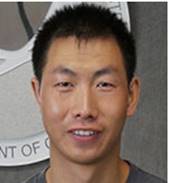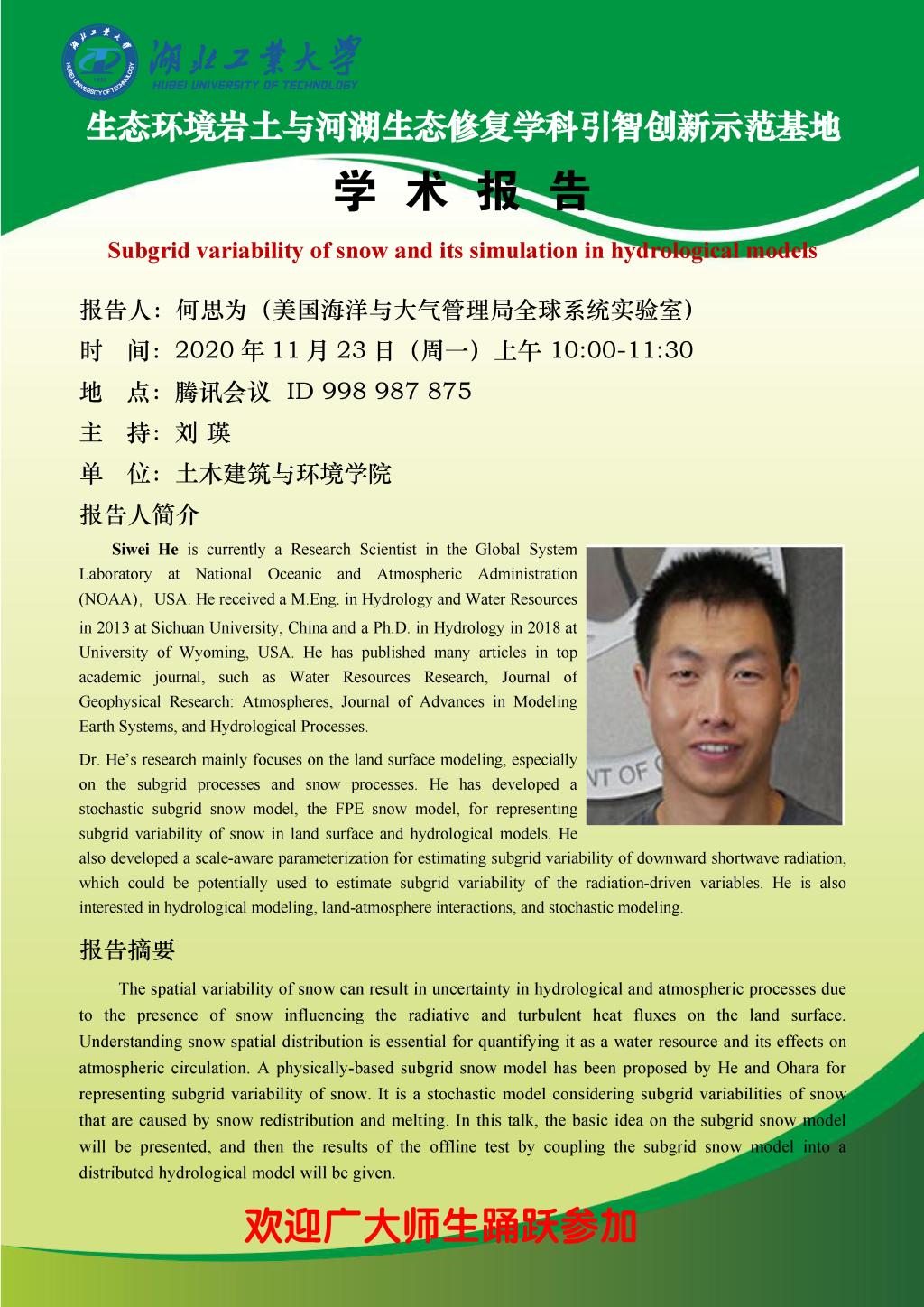报告人:何思为(美国海洋与大气管理局全球系统实验室)
时 间:2020年11月23日(周一)上午 10:00-11:30
地 点:腾讯会议 ID 998 987 875
主 持:刘瑛
单 位:土木建筑与环境学院
报告人简介
 Siwei He is currently a Research Scientist in the Global System Laboratory at National Oceanic and Atmospheric Administration (NOAA),USA. He received a M.Eng. in Hydrology and Water Resources in 2013 at Sichuan University, China and a Ph.D. in Hydrology in 2018 at University of Wyoming, USA. He has published many articles in top academic journal, such as Water Resources Research, Journal of Geophysical Research: Atmospheres, Journal of Advances in Modeling Earth Systems, and Hydrological Processes.
Siwei He is currently a Research Scientist in the Global System Laboratory at National Oceanic and Atmospheric Administration (NOAA),USA. He received a M.Eng. in Hydrology and Water Resources in 2013 at Sichuan University, China and a Ph.D. in Hydrology in 2018 at University of Wyoming, USA. He has published many articles in top academic journal, such as Water Resources Research, Journal of Geophysical Research: Atmospheres, Journal of Advances in Modeling Earth Systems, and Hydrological Processes.
Dr. He’s research mainly focuses on the land surface modeling, especially on the subgrid processes and snow processes. He has developed a stochastic subgrid snow model, the FPE snow model, for representing subgrid variability of snow in land surface and hydrological models. He also developed a scale-aware parameterization for estimating subgrid variability of downward shortwave radiation, which could be potentially used to estimate subgrid variability of the radiation-driven variables. He is also interested in hydrological modeling, land-atmosphere interactions, and stochastic modeling.
报告摘要
The spatial variability of snow can result in uncertainty in hydrological and atmospheric processes due to the presence of snow influencing the radiative and turbulent heat fluxes on the land surface. Understanding snow spatial distribution is essential for quantifying it as a water resource and its effects on atmospheric circulation. A physically-based subgrid snow model has been proposed by He and Ohara for representing subgrid variability of snow. It is a stochastic model considering subgrid variabilities of snow that are caused by snow redistribution and melting. In this talk, the basic idea on the subgrid snow model will be presented, and then the results of the offline test by coupling the subgrid snow model into a distributed hydrological model will be given.
